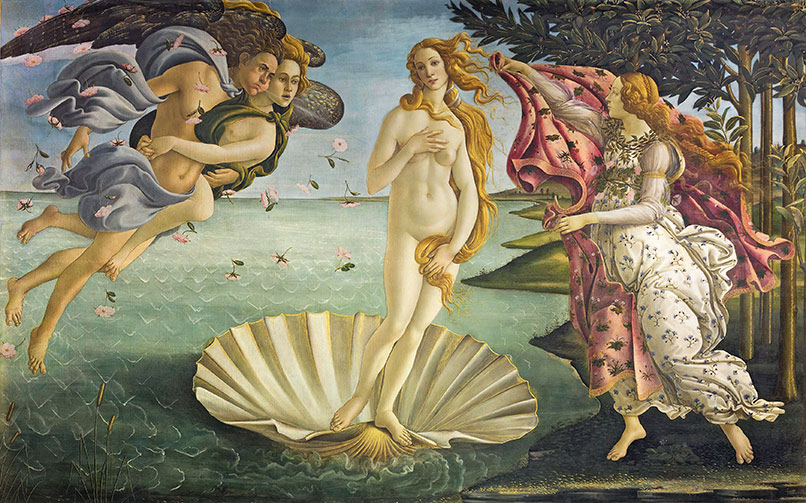-

Madonna and Child with Young Saint John the Baptist
The Virgin cradles the Christ child as young John the Baptist looks on, his reed cross foreshadowing destiny. Golden light bathes their faces, halos glowing against the Tuscan hills. A tender moment, yet weighted with prophecy—the Baptist’s gaze already fixed on his sacred role.
-
-full.webp)
Virgin and Child (ca. 1485)
Mary cradles the infant Jesus, her gaze tender yet distant. Gold leaf halos glow against soft blues, their delicate fingers almost touching. The child clutches a pomegranate—its split flesh revealing blood-red seeds. A quiet tension lingers between maternal warmth and the weight of divine destiny.
-

Birth Of Venus (1485)
“The Birth of Venus” portrays Venus emerging from the sea, embodying Renaissance ideals of classical beauty.